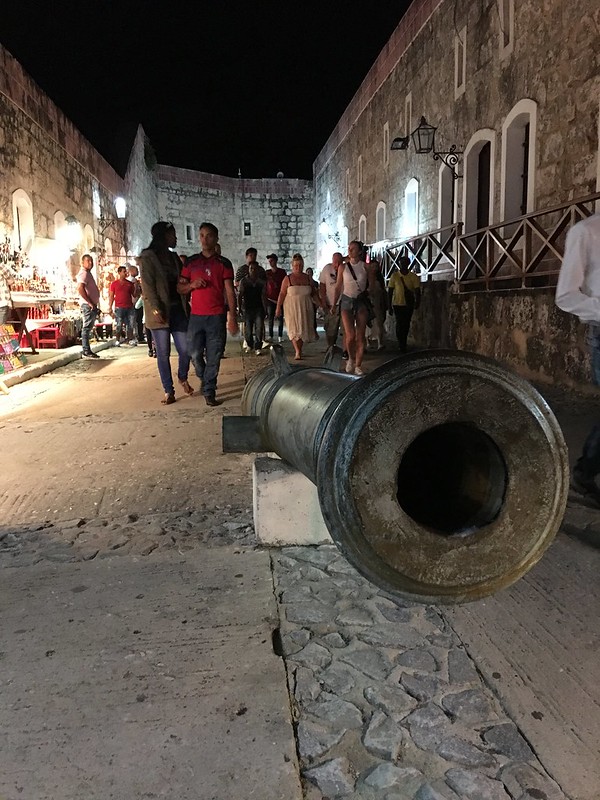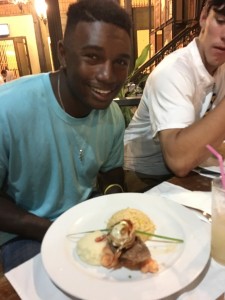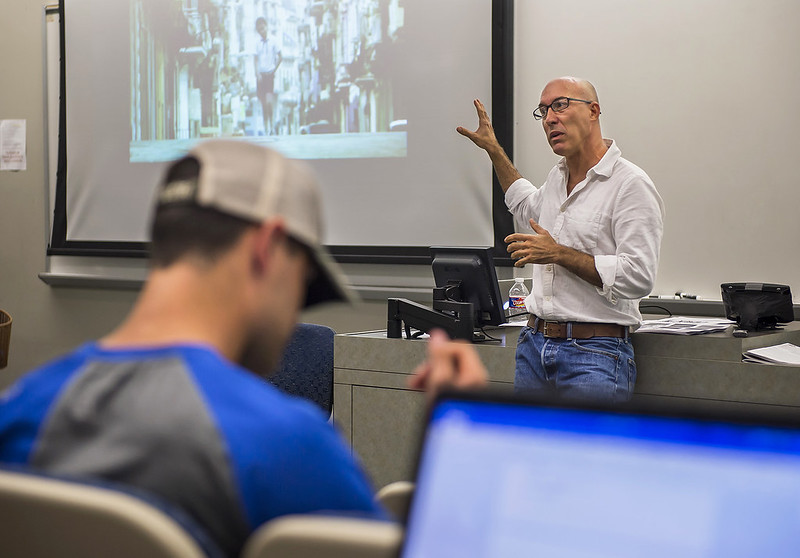Mouse over the picture below to open the Flickr gallery arrow buttons and view more images from the day.
If the photo gallery doesn’t appear or open, click here.
On Thursday morning the Owls practiced for the first time, and it was no casual outing. The team was allowed to train in the gem of Cuban baseball, Estadio Latinamericano in Havana. The facility is the regular season home of Los Industralies and the same venue where the Cuban national team hosted MLB’s Tampa Rays in an exhibition last spring that was attended by more than 50,000 fans.
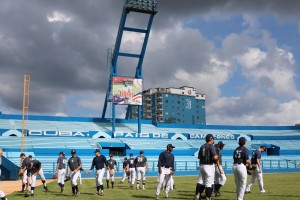 “They (the Cuban Baseball Federation) gave us a great honor to able to practice there today,” said Rice head coach Wayne Graham. “And it shows that the games we’re playing on this tour are as important in their eyes as they are for our program. That’s something.
“They (the Cuban Baseball Federation) gave us a great honor to able to practice there today,” said Rice head coach Wayne Graham. “And it shows that the games we’re playing on this tour are as important in their eyes as they are for our program. That’s something.
“Practice itself was fine,” Graham said. “Once we got on the field, it was what we’ve been doing all fall. We even got to scrimmage for two innings.”
After practice the team had a (Thanksgiving) lunch consisting of an authentic Cuban culinary treat — chicken with rice and black beans. The Owls in fact went straight from the country’s national stadium to the restaurant in their practice uniforms, which was just fine with the baseball-crazed locals.
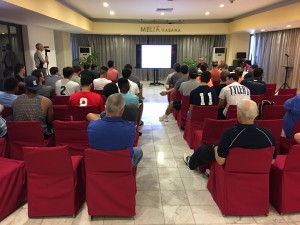 When the team returned to its Havana hotel, the players had an official class that the team has been taking all semester, and many of the Owls said it was the best one yet. Rice Professor Luis Duno-Gottberg had the director of the Cuban Baseball Federation, Jesus Barosa, and the country’s pitching legend, Herberto de Armas, address the team (and coaches) about the history and structure of the sport in Cuba.
When the team returned to its Havana hotel, the players had an official class that the team has been taking all semester, and many of the Owls said it was the best one yet. Rice Professor Luis Duno-Gottberg had the director of the Cuban Baseball Federation, Jesus Barosa, and the country’s pitching legend, Herberto de Armas, address the team (and coaches) about the history and structure of the sport in Cuba.
At one point Barosa, with Duno-Gottberg translating, told the assembled Rice team that he attended their practice that morning, and that Rice’s “diligent approach to its training session shows that the players are well-coached … and I particularly liked your left-handed hitting centerfielder” (identifying junior Ryan Chandler).
After a brief break, the team and traveling fans gathered in the hotel’s lobby and headed out for an unconventional Thanksgiving Day dinner at La Imprenta (The Print Shop). Dating back to the 18th century, the building used to house one of Havana’s main print shops for newspapers and the owner’s home before it began to “fall apart,” according to the host. The building was later renovated into the beautiful restaurant it is today. Sitting a few feet from the team was the last used printing press, which was made by The Chandler & Price Company of Cleveland.
The team feasted on salad and soup and the Cuban version of surf and turf, followed by bread pudding, minus the rum, of course.
Duno-Gottberg then directed the party back a different way to the buses so that the group could walk through the La Plaza San Francisco, one of many open spaces in the dense Old Havana.
From there the team headed to Morro Castle and the Fort of St. Charles.
Morro Castle was erected between 1589 and 1630 to protect the entrance to Havana Harbor from pirates and foreign invaders. It is a classic example of Renaissance military architecture.
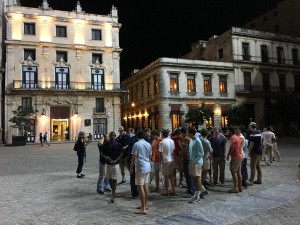 For more than a century, the fort withstood numerous attacks by French, Dutch and English privateers, but in 1762, after a 44-day siege, a 14,000-strong British force captured El Morro by attacking from the landward side. The Castillo’s famous lighthouse was added in 1844.
For more than a century, the fort withstood numerous attacks by French, Dutch and English privateers, but in 1762, after a 44-day siege, a 14,000-strong British force captured El Morro by attacking from the landward side. The Castillo’s famous lighthouse was added in 1844.
The Fort of St. Charles, or colloquially known as “La Cabana,” is the third-largest fort in the Americas and the largest Spanish colonial fortress in the Americas.
The fort was built between 1763 and 1774 on a long, exposed ridge on the east side of Havana harbor to fill a weakness in the city’s defenses. When the British took Havana in 1762, it was by gaining control of this strategically important ridge; from here they shelled the city into submission. To prevent a repeat performance, the Spanish King Carlos III ordered the construction of the massive fort.
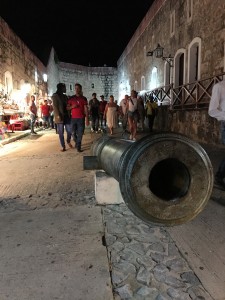 Gen. Gerardo Machado and Fulgencio Batista (president from 1940 to 1944 and 1952 to 1958) used the fortress (presumably at different times) as a military prison. Immediately after the revolution, Che Guevara set up his headquarters there.
Gen. Gerardo Machado and Fulgencio Batista (president from 1940 to 1944 and 1952 to 1958) used the fortress (presumably at different times) as a military prison. Immediately after the revolution, Che Guevara set up his headquarters there.
Every evening at 9, actors in 18th-century military uniforms fire a cannon, but not before a 15-minute show that includes a drum corps entry. The cannon shot used to warn of the closing of the city gates.
The Owls are certainly having a fun, cultural and educational experience in Havana, but there is also the matter of actually playing five games against teams in the Cuban Baseball League. After arriving Wednesday evening (Nov. 23), Rice is scheduled to play its first game Friday against Artemisa in the province of the same name 38 miles southwest of Havana. First pitch is set for 1 p.m. local time at Estadio de Guanajay.
And in case you missed it from earlier today, after their first practice of their trip in Cuba, the members of the Rice baseball team sent a greeting home.

